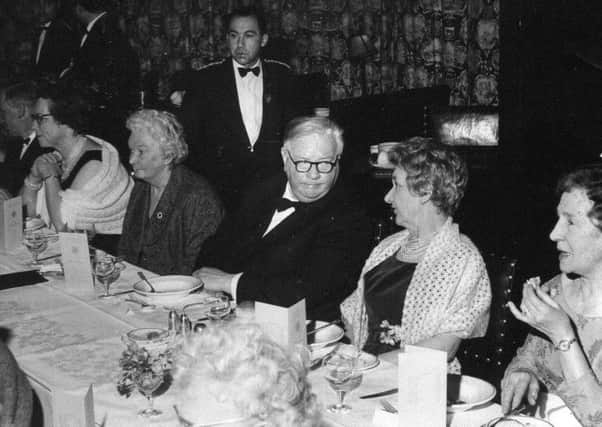Look Back with Little: A never-ending story of country town research


Today I hope to demonstrate that this conveys a very important message to anyone attempting to unravel the story of the development of a country town.
Back in June 1958 someone who fully appreciated this observation was Honorary Secretary of the Banbury Historical Society Jeremy Gibson. Jeremy had been invited by Banbury Rotary Club to be their speaker at a weekly meeting. Press reports of this occasion highlighted his ‘very comprehensive and keen knowledge of various aspects of the past history of the town and people’. Significantly that same year there were two publications which sought to arouse public interest in this theme. The first was a short popular history by Ted Brinkworth entitled Old Banbury that was intended to whet appetites for more detailed knowledge. In the preface he records that despite its briefness Old Banbury embodies much new material. However he leaves the story on the verge of the 19th century. Encouragement to readers was the prospect of ‘much new material’.
Advertisement
Hide AdAdvertisement
Hide AdIn making this promise Ted recorded a debt of gratitude to antiquarian Alfred Beesley who ‘blazed the trail’ of local historical investigation back in 1841. His History of Banbury was noted as much for its footnotes, which opened whole avenues of investigation, as the main text. A good example is within a description of the town before the disastrous fire of 1628. Beesley begins his account with the Beast Market and then uses a note to discuss linked roads, Colebar Street and Broad Street. The former is traced to the property deeds of a Mr Dickason whilst the latter appears not to have been recorded before 1705 and was sometimes known as Broad Lane.
Since Ted wrote Old Banbury the town is most fortunate in having Barrie Trinder’s Victorian Banbury which brings to fruition Ted’s hope for revelations about a ‘turbulent , creative 19th century’.
The year 1958 was not only notable for Ted’s pocket sized contribution to local knowledge but also for the first full history of Banbury to be published since Beesley’s study in 1841. The author William Potts was last in line within a family of owners of the Banbury Guardian.
William was born in 1868 and died in 1947. He had the advantage of being Banbury born as well as membership of a range of worthy local organisations. An important implication was that he was well-placed to bring the town’s history up-to-date and to add information which Beesley could not obtain. The outcome was a ‘fascinating account of Banbury from early times up to the present day’. His material came from original sources in the Public Record Office, Bodleian Library Oxford, the British Museum and the Muniment Room at Lincoln Cathedral.
Advertisement
Hide AdAdvertisement
Hide AdIn addition Arthur Butler, who was a director of Banbury Guardian Limited, offered him considerable encouragement.
In November 1958 a review article appeared in the Guardian’s rival newspaper the Banbury Advertiser in which some interesting points were made, notably that the text gained from a delay to publication. Various merits accrued from the care with which other people particularly Ted Brinkworth and Ted Clark had put together the volume. The outcome was a book which was said to have ‘a particular appeal for natives of Banbury as well as fascination for all who enjoy historical documents’.
A curious aspect of William Potts’ remarkable town knowledge is that he believed that today’s location for Banbury Cross was the true site of the original monument. Post publication research has revealed the existence of several crosses and speculated that the market cross was most probably in Cornhill. Moreover it was here that the Fine Lady would have been sighted.
In 2018 there is scope for further research into a town which is more complex than when country market statutes held sway.